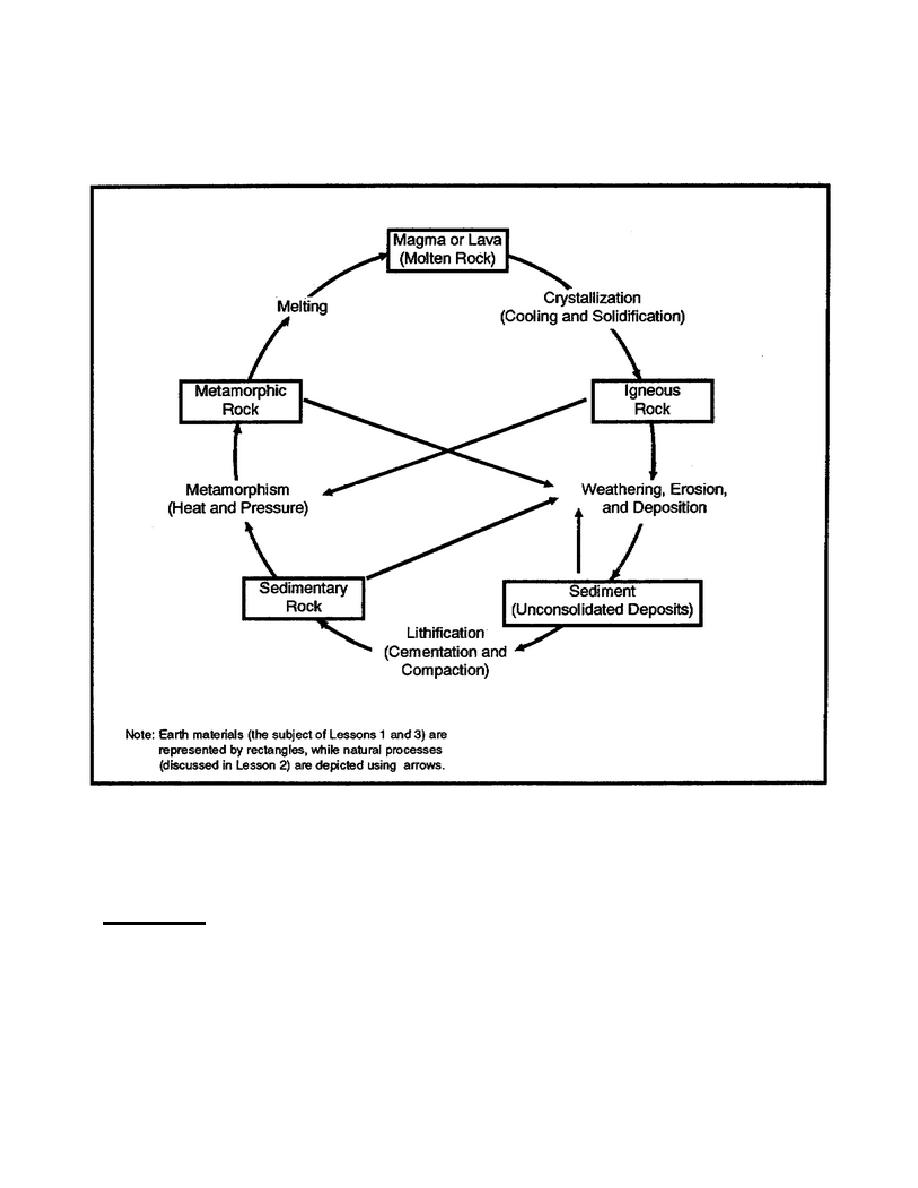
Although each category is separate and distinct, natural processes exist that transform the rock types of one
category to those of another, resulting in a constant recycling of earth materials without a net increase or decrease
in the total amount of material on the earth. This phenomenon is referred to as the rock cycle, and it is
diagrammatically represented in figure 1-1.
Figure 1-1. The rock cycle
Because an understanding of the composition and formation of igneous, sedimentary, and metamorphic rocks is
essential for effective terrain analysis, each of these broad categories is discussed in further detail.
1. Igneous Rocks. Igneous rocks form from the solidification, or crystallization, of molten rock material. This
molten material originates a magma deep within the earth where temperatures and pressures are extremely high.
Because magma is generally less dense than the surrounding solid rock, and because it is somewhat fluid, it has a
tendency to migrate upward along cracks and weaknesses in the overlying rock material. As the magma rises, it
encounters progressively cooler temperatures, and at some point, it begins to crystallize. If crystallization takes
place before the magma reaches the earth's surface, the resulting rocks
EN5341
1-4



 Previous Page
Previous Page
